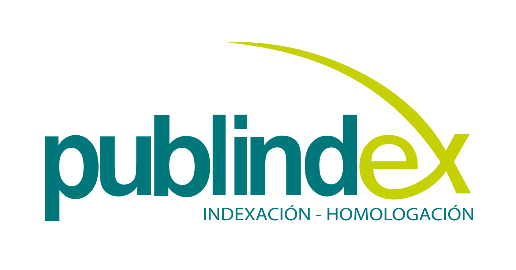
Esta obra está bajo una licencia internacional Creative Commons Atribución-NoComercial-CompartirIgual 4.0.
Los autores que publiquen en esta Revista aceptan las siguientes condiciones:
Acta Colombiana de Psicología se guía por las normas internacionales sobre propiedad intelectual y derechos de autor, y de manera particular el artículo 58 de la Constitución Política de Colombia, la Ley 23 de 1982 y el Acuerdo 172 del 30 de Septiembre de 2010 (Reglamento de propiedad intelectual de la Universidad Católica de Colombia)
Los autores conservan los derechos de autor y ceden a la Revista el derecho de la primera publicación, con el trabajo registrado con la Este obra está bajo una licencia de Creative Commons Reconocimiento-NoComercial-CompartirIgual 4.0 Internacional, que permite a terceros utilizar lo publicado siempre que mencionen la autoría del trabajo y a la primera publicación en esta Revista.
Resumen
El objetivo de esta investigación fue analizar el papel que los factores de personalidad pertenecientes a los Cinco Grandes y la Tríada Oscura —maquiavelismo, narcisismo y psicopatía— tienen en la conducción agresiva. La muestra se compuso de 318 estudiantes universitarios con permiso de conducir, quienes contestaron a una batería de pruebas que evaluaba los factores de personalidad de los Cinco Grandes (tipi), la Tríada Oscura (dd) y la conducción agresiva (das y dax). Los análisis de regresión jerárquica controlando las variables de edad y sexo, respaldan la utilidad predictiva de los factores de personalidad de los Cinco Grandes y la Tríada Oscura. Los resultados mostraron cómo la afabilidad, la estabilidad emocional y la apertura a la experiencia predicen de manera significativa diversos aspectos de la conducción agresiva. El maquiavelismo y el narcisismo son predictores significativos de diversas formas de expresión de la ira en la conducción, una vez controlados
los efectos de los Cinco Grandes.
Palabras clave

Citas
Akbari, M., Lankarani, K. B., Heydari, S. T., Motevalian, S. A., Tabrizi, R., Asadi-Shekari, Z., & Sullman, M. J. (2019). Meta-analysis of the correlation between personality characteristics and risky driving behaviors. Journal of Injury and Violence Research, 11(2), 107-122. https://doi.org/10.5249/jivr.v11i2.1172
Aniței, M., Chraif, M., Burtaverde, V., & Mihaila, T. (2014). The Big Five Personality Factors in the prediction of aggressive driving behavior among Romanian youngsters. International Journal of Traffic and Transportation Psychology, 2(1), 7-20. https://acortar.link/3Vo2h1
Arthur, W., Bell, S. T., Edwards, B. D., Day, E. A., Tubre, T. C., & Tubre, A. H. (2005). Convergence of self-report and archival crash involvement data: A two-year longitudinal follow-up. Human Factors, 47(2), 303-313. https://doi.org/10.1518/0018720054679416
Asociación Médica Mundial. (2017). Declaración de Helsinki de la amm-Principios éticos para las investigaciones médicas en seres humanos. Asociación Médica Mundial. https://www.wma.net/es/policies-post/declaracion-de-helsinki-de-la-amm-principios-eticos-para-las-investigaciones-medicas-en-seres-humanos/
Ato, M., López-García, J. J., & Benavente, A. (2013). Un sistema de clasificación de los diseños de investigación en psicología. Anales de Psicología/Annals of Psychology, 29(3), 1038-1059. https://doi.org/10.6018/analesps.29.3.178511
Ball, L., Tully, R., & Egan, V. (2018). The influence of impulsivity and the Dark Triad on self-reported aggressive driving behaviours. Accident Analysis & Prevention, 120, 130-138. https://doi.org/10.1016/j.aap.2018.08.010
Barlett, C. P. (2016). Exploring the correlations between emerging adulthood, Dark Triad traits, and aggressive behavior. Personality and Individual Differences, 101, 293-298. https://doi.org/10.1016/j.paid.2016.05.061
Benfield, J. A., Szlemko, W. J., & Bell, P. A. (2007). Driver personality and anthropomorphic attributions of vehicle personality relate to reported aggressive driving tendencies. Personality and Individual Differences, 42(2), 247- 258. https://doi.org/10.1016/j.paid.2006.06.016
Bucsuházy, K., Matuchová, E., Zůvala, R., Moravcová, P., Kostíková, M., & Mikulec, R. (2020). Human factors contributing to the road traffic accident occurrence. Transportation Research Procedia, 45, 555-561. https://doi.org/10.1016/j.trpro.2020.03.057
Burtăverde, V., Chraif, M., Aniţei, M., & Mihăilă, T. (2016).The incremental validity of the dark triad in predicting driving aggression. Accident Analysis & Prevention, 96, 1-11. https://doi.org/10.1016/j.aap.2016.07.027
Bushman, B. J., Steffgen, G., Kerwin, T., Whitlock, T., & Weisenberger, J. M. (2018). “Don’t you know I own the road?” The link between narcissism and aggressive
driving. Transportation Research Part F: Traffic Psychology and Behaviour, 52, 14-20. https://doi.org/10.1016/j.trf.2017.10.008
Campbell, W. K., Rudich, E. A., & Sedikides, C. (2002). Narcissism, self-esteem, and the positivity of selfviews: Two portraits of self-love. Personality and Social Psychology Bulletin, 28(3), 358-368. https://doi.org/10.1177/0146167202286007
Chraif, M., Aniţei, M., Burtăverde, V., & Mihăilă, T. (2016). The link between personality, aggressive driving, and risky driving outcomes–testing a theoretical model. Journal of Risk Research, 19(6), 780-797. https://doi.org/10.1080/13669877.2015.1042500
Christie, R., & Geis, F. (1970). Studies in Machiavellianism. Academic Press.
Cleckley, H. (1941). The mask of sanity: An attempt to reinterpret the so-called psychopathic personality. Mosby.
Cobb-Clark, D. A., & Schurer, S. (2012). The stability of big-five personality traits. Economics Letters, 115(1), 11-15. https://doi.org/10.1016/j.econlet.2011.11.015
Costa, P. T. Jr., & McCrae, R. R. (1992). Revised neo Personality Inventory (neo-pi-r) and neo Five Factor Inventory (neo-ffi) professional manual. Psychological Assessment Resources.
Dahlen, E. R., Edwards, B. D., Tubré, T., Zyphur, M. J., & Warren, C. R. (2012). Taking a look behind the wheel: An investigation into the personality predictors of aggressive driving. Accident Analysis & Prevention, 45, 1-9. https://doi.org/10.1016/j.aap.2011.11.012
Dahlen, E. R., & White, R. P. (2006). The Big Five factors, sensation seeking, and driving anger in the prediction of unsafe driving. Personality and Individual Differences, 41(5), 903-915. https://doi.org/10.1016/j.paid.2006.03.016
Deffenbacher, J. L., Lynch, R. S., Oetting, E. R., & Swaim, R. C. (2002). The Driving Anger Expression Inventory: A measure of how people express their anger on the road. Behaviour Research and Therapy, 40(6), 717-737. https://doi.org/10.1016/S0005-7967(01)00063-8
Deffenbacher, J. L., Oetting, E. R., & Lynch, R. S. (1994). Development of a driving anger scale. Psychological Reports, 74(1), 83-91. https://doi.org/10.2466/pr0.1994.74.1.83
Demir, B., Demir, S., & Özkan, T. (2016). A contextual model of driving anger: A meta-analysis. Transportation Research Part F: Traffic Psychology and Behaviour, 42, 332-349. https://doi.org/10.1016/j.trf.2016.09.020
Demircioğlu, Z. I., & Köse, A. G. (2021). Effects of attachment styles, dark triad, rejection sensitivity, and relationship satisfaction on social media addiction: A mediated model. Current Psychology, 40(1), 414-428. https://doi.org/10.1007/s12144-018-9956-x
Deniz, P., Lajunen, T., Özkan, T., & Gaygısız, E. (2021). Masculinity, femininity, and angry drivers: Masculinity and femininity as moderators between driver anger and anger expression style among young drivers. Accident Analysis & Prevention, 161, Article 106347. https://doi.org/10.1016/j.aap.2021.106347
Dirección General de Tráfico. (2020). Anuario estadístico de accidentes, 2019. dgt; Ministerio del Interior. https://www.dgt.es/export/sites/web-DGT/.galleries/down
loads/dgt-en-cifras/publicaciones/Anuario-Estadisticode-Accidentes/Anuario-Estadistico-Accidentes-2019-Accesible.pdf
Dula, C. S., & Geller, E. S. (2003). Risky, aggressive, or emotional driving: Addressing the need for consistent communication in research. Journal of Safety Research, 34(5), 559-566. https://doi.org/10.1016/j.jsr.2003.03.004
Eagly, A. H., & Steffen, V. J. (1986). Gender and aggressive behavior: A meta-analytic review of the social psychological literature. Psychological Bulletin, 100(3), 309-330.
https://doi.org/10.1037/0033-2909.100.3.309
Edwards, B. D., Warren, C. R., Tubré, T. C., Zyphur, M. J., & Hoffner-Prillaman, R. (2013). The validity of narcissism and driving anger in predicting aggressive driving in a sample of young drivers. Human Performance, 26(3), 191-210. https://doi.org/10.1080/08959285.201
795961
Ellison-Potter, P., Bell, P., & Deffenbacher, J. (2001). The effects of trait driving anger, anonymity, and aggressive stimuli on aggressive driving behavior. Journal of
Applied Social Psychology, 31(2), 431-443. https://doi.org/10.1111/j.15591816.2001.tb00204.x
Endriulaitienė, A., Šeibokaitė, L., Žardeckaitė-Matulaitienė, K., Markšaitytė, R., & Slavinskienė, J. (2018). Attitudes towards risky driving and Dark Triad personality traits
in a group of learner drivers. Transportation Research Part F: Traffic Psychology and Behaviour, 56, 362-370. https://doi.org/10.1016/j.trf.2018.05.017
Evans, L. (1996). The dominant role of driver behavior in traffic safety. American Journal of Public Health, 86(6), 784-786. https://doi.org/10.2105/AJPH.86.6.784
Fernández-del-Río, E., Ramos-Villagrasa, P. J., & Escartín, J. (2021). The incremental effect of Dark personality over the Big Five in workplace bullying: Evidence from perpetrators and targets. Personality and Individual Differences, 168, Article 110291. https://doi.org/10.1016/j.paid.2020.110291
Furnham, A., Richards, S. C., & Paulhus, D. L. (2013). The Dark Triad of personality: A 10 year review. Social and Personality Psychology Compass, 7(3), 199-216. https://
doi.org/10.1111/spc3.12018
Gosling, S. D., Rentfrow, P. J., & Swann, W. B. (2003). A very brief measure of the Big-Five personality domains. Journal of Research in Personality, 37(6), 504-528. https://doi.org/10.1016/s0092-6566(03)00046-1
Guo, S., An, N., & Sun, L. (2022). Psychometric properties of driver self-image inventory for Chinese drivers and its associations with personality and driving style. Transportation Research Part F: Traffic Psychology and Behaviour, 85, 236-244. https://doi.org/10.1016/j.
trf.2022.01.011
Herrero-Fernández, D. (2011). Adaptación psicométrica de la versión reducida del Driving Anger Scale en una muestra española. Diferencias por edad y sexo. Anales de Psicología/Annals of Psychology, 27(2), 544-549. https://revistas.um.es/analesps/article/view/123191
Herrero-Fernández, D., Oliva-Macías, M., & Parada-Fernández, P. (2019). Propiedades psicométricas de una versión breve del Driving Anger Expression Inventory en conductores españoles. Acción Psicológica, 16(1), 63-74. https://doi.org/10.5944/ap.16.1.22364
Islam, M., & Mannering, F. (2020). A temporal análisis of driver-injury severities in crashes involving aggressive and non-aggressive driving. Analytic Methods in Accident Research, 27, Article 100128. https://doi.org/10.1016/j.amar.2020.100128
Jonason, P. K., & Webster, G. D. (2010). The dirty dozen: A concise measure of the dark triad. Psychological Assessment, 22(2), 420-432. https://doi.org/10.1037/a0019265
Jones, S. E., Miller, J. D., & Lynam, D. R. (2011). Personality, antisocial behavior, and aggression: A meta-analytic review. Journal of Criminal Justice, 39(4), 329-337. https://doi.org/10.1016/j.jcrimjus.2011.03.004
Jones, D. N., & Neria, A. L. (2015). The Dark Triad and dispositional aggression. Personality and Individual Differences, 86, 360-364. https://doi.org/10.1016/j.paid.2015.06.021
Jovanović, D., Lipovac, K., Stanojević, P., & Stanojević, D. (2011). The effects of personality traits on driving-related anger and aggressive behaviour in traffic among Serbian drivers. Transportation Research Part F: Traffic Psychology and Behaviour, 14(1), 43-53. https://doi.org/10.1016/j.trf.2010.09.005
King, Y., & Parker, D. (2008). Driving violations, aggression and perceived consensus. Revue Européenne de Psychologie Appliquée/European Review of Applied Psychology, 58(1), 43-49. https://doi.org/10.1016/j.erap.2006.05.001
Lennon, A. J., & Watson, B. C. (2015). A matter of style? Driver attributional ‘style’in accounting for the driving of others as protective or as predisposing drivers towards
retaliatory aggressive driving. Transportation Research Part F: Traffic Psychology and Behaviour, 30, 163-172. https://doi.org/10.1016/j.trf.2015.03.001
Lonczak, H. S., Neighbors, C., & Donovan, D. M. (2007). Predicting risky and angry driving as a function of gender. Accident Analysis & Prevention, 39(3), 536-545. https://doi.org/10.1016/j.aap.2006.09.010
Lustman, M., Wiesenthal, D. L., & Flett, G. L. (2010). Narcissism and aggressive driving: Is an inflated view of the self a road hazard?. Journal of Applied Social Psychology, 40(6), 1423-1449. https://doi.org/10.1111/j.1559-1816.2010.00624.x
Ma, Y., Gu, X., Yu, Y. N., Khattakc, A. J., Chen, S., & Tang, K. (2021). Identification of contributing factors for driver’s perceptual bias of aggressive driving in China. Sustainability, 13(2), 766. https://doi.org/10.3390/su13020766
Ma, C., Hao, W., Xiang, W., & Yan, W. (2018). The impact of aggressive driving behavior on driver-injury severity at highway-rail grade crossings accidents. Journal of Advanced Transportation, 2018, Article 9841498. https://doi.org/10.1155/2018/9841498
Muris, P., Merckelbach, H., Otgaar, H., & Meijer, E. (2017). The malevolent side of human nature: A meta-analysis and critical review of the literature on the dark triad (narcissism, machiavellianism, and psychopathy). Perspectives on Psychological Science, 12(2), 183-204. https://doi.org/10.1177/1745691616666070
Nocera, T. R., & Dahlen, E. R. (2020). Dark triad personality traits in cyber aggression among college students. Violence and Victims, 35(4), 524-538. https://doi.org/10.1891/vv-d-18-00058
OECD. (2013). Health at a glance 2013: oecd indicators. OECD Publishing.
Park, S., Oh, C., Kim, Y., Choi, S., & Park, S. (2019). Understanding impacts of aggressive driving on freeway safety and mobility: A multi-agent driving simulation approach. Transportation Research Part F: Traffic Psychology and Behaviour, 64, 377-387. https://doi.org/10.1016/j.trf.2019.05.017
Paulhus, D. L., & Williams, K. M. (2002). The dark triad of personality: Narcissism, machiavellianism, and psychopathy. Journal of Research in Personality, 36(6), 556-
https://doi.org/10.1016/s0092-6566(02)00505-6
Petridou, E., & Moustaki, M. (2000). Human factors in the causation of road traffic crashes. European Journal of Epidemiology, 16(9), 819-826. https://doi.org/10.1023/A:1007649804201
Pineda, D., Sandín, B., & Muris, P. (2020). Psychometrics properties of the spanish version of two dark triad scales: The dirty dozen and the short dark triad. Current Psychology, 39, 1873-1881. https://doi.org/10.1007/s12144-018-9888-5
Romero, E., Villar, P., Gómez-Fraguela, J. A., & López-Romero, L. (2012). Measuring personality traits with ultra-short scales: A study of the Ten Item Personality Inventory (tipi) in a Spanish sample. Personality and Individual Differences, 53(3), 289-293. https://doi.org/10.1016/j.paid.2012.03.035
Shen, B., Ge, Y., Qu, W., Sun, X., & Zhang, K. (2018). The different effects of personality on prosocial and aggressive driving behaviour in a Chinese sample. Transportation Research Part F: Traffic Psychology and Behaviour, 56, 268-279. https://doi.org/10.1016/j.trf.2018.04.019
Szumska, E. M., & Jurecki, R. (2020). The effect of aggressive driving on vehicle parameters. Energies, 13(24), Article 6675. https://doi.org/10.3390/en13246675
Tang, W. Y., Reer, F., & Quandt, T. (2020). The interplay of gaming disorder, gaming motivations, and the dark triad. Journal of Behavioral Addictions, 9(2), 491-496. https://
doi.org/10.1556/2006.2020.00013
Van Geel, M., Goemans, A., Toprak, F., & Vedder, P. (2017). Which personality traits are related to traditional bullying and cyberbullying? A study with the Big Five, Dark Triad and sadism. Personality and Individual Differences, 106, 231-235. https://doi.org/10.1016/j.paid.2016.10.063
Vanlaar, W., Simpson, H., Mayhew, D., & Robertson, R. (2007). The road safety monitor 2006: Aggressive driving. Traffic Injury Research Foundation.
Wickens, C. M., Mann, R. E., Ialomiteanu, A. R., & Stoduto, G. (2016). Do driver anger and aggression contribute to the odds of a crash? A population-level analysis. Transportation Research Part F: Traffic Psychology and Behaviour, 42, 389-399. https://doi.org/10.1016/j.
trf.2016.03.003
World Health Organization. (2018). Global status report on road safety 2018. World Health Organization Press. https://apps.who.int/iris/rest/bitstreams/1164010/retrieve
Zhang, T., Chan, A. H., Li, S., Zhang, W., & Qu, X. (2018). Driving anger and its relationship with aggressive driving among Chinese drivers. Transportation Research Part F: Traffic Psychology and Behaviour, 56, 496-507. https://doi.org/10.1016/j.trf.2018.05.011
Zhang, H., Qu, W., Ge, Y., Sun, X., & Zhang, K. (2017). Effect of personality traits, age and sex on aggressive driving: Psychometric adaptation of the Driver Aggression Indicators Scale in China. Accident Analysis & Prevention, 103, 29-36. https://doi.org/10.1016/j.
aap.2017.03.016
Ziegler, M., Kemper, C. J., & Kruyen, P. (2014). Short Scales–Five misunderstandings and ways to overcome them. Journal of Individual Differences, 35(4), 185-189. https://doi.org/10.1027/1614-0001/a000148

































